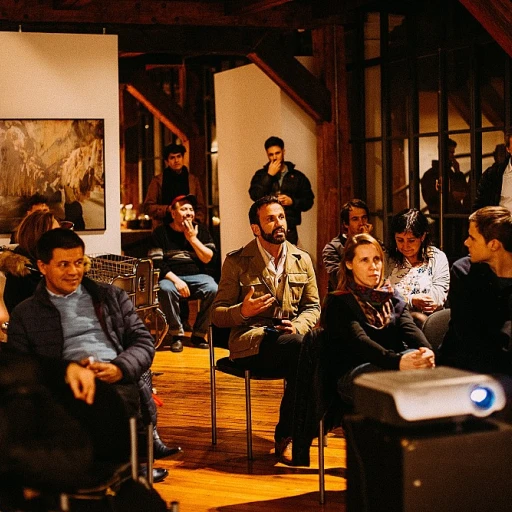
Understanding the Skills Gap
Identifying the Disconnect Between Education and Industry Needs
The concept of a skills gap has been a pressing issue in education, especially in disciplines like STEM where evolving industry needs often outpace the traditional curriculum. Students frequently graduate without the practical skills demanded by employers, particularly in science-based roles that require hands-on lab experience. While traditional education provides foundational knowledge, it frequently lacks the tools necessary for real-world application. This gap hinders student engagement and successful transition into the workforce. Several studies and articles highlight this issue, emphasizing the disparity between the training students receive and the expertise required in their respective fields. A key element in this discussion is the integration of real life learning experiences into classrooms through innovative educational technology (edtech). Tools such as simulations, often available in modern virtual labs like Labster, are specifically designed to bridge this gap by offering students realistic, practical learning experiences. These vanguard solutions provide immersive learning environments where students can conduct experiments in real time. Cloud based platforms like vrlab academy allow students unprecedented access to virtual science labs which mimic real environments. Through these virtual labs, students engage in experiment based learning activities that mirror real-world science labs, thereby enhancing their readiness for professional challenges. By understanding the critical nature of this skills gap, educational institutions and technology innovators are working together to craft solutions that not only benefit current learning paradigms but also adapt to future trends in edtech. To explore more about how edtech is actively participating in these efforts, visit skills-gap.net.The Role of Edtech in Modern Education
The Impact of Edtech in Today's Classroom
In recent years, educational technology (edtech) has grown rapidly, transforming the way students access and absorb knowledge. Its impact is especially significant in higher education, where virtual labs have become an essential tool for science and STEM disciplines. These innovations enable institutions to offer learning experiences that are both immersive and interactive. Educators are increasingly relying on cloud-based solutions to develop real-time simulations of science labs. Platforms like Labster provide students with hands-on virtual experiments, mimicking real-life scenarios. This type of learning is particularly beneficial in fields that demand substantial lab work, such as biology and chemistry. Incorporating edtech tools allows educators to transcend traditional limitations, such as equipment availability or classroom space. By simulating real conditions, students gain practical skills that were once restricted to physical labs. Furthermore, labster virtual environments foster student engagement through tailored, self-paced learning adventures. Virtual lab implementations are crafted carefully to match or exceed the educational depth provided by physical labs. With technology-based applications like vrlab academy, students and educators collaborate on simulations that match real world complexities, preparing learners for future challenges. These developments underscore the transformative role of edtech in education, making it an indispensable element in bridging the ever-present skills gap. Read more about the influence of edtech solutions on education and how they work to mitigate skill deficiencies across industries.Virtual Labs: A Game Changer in Learning
Revolutionizing Learning with Virtual Labs
Virtual labs have emerged as a transformative tool in the realm of education, particularly in science and STEM fields. These labs provide students with the opportunity to engage in immersive learning experiences that closely mimic real-life scenarios. By leveraging educational technology, virtual labs allow students to conduct experiments and learn in a cloud-based environment, offering flexibility and access that traditional labs might not.
One of the standout features of virtual labs is their ability to offer real-time simulations. This means that students can perform experiments and see the results instantly, enhancing their understanding of complex scientific concepts. For instance, platforms like Labster and VRLab Academy provide a range of simulations virtual that cover various topics, from biology to chemistry, allowing students to explore and learn at their own pace.
Virtual labs are particularly beneficial in higher education, where access to physical labs might be limited. They enable students to conduct science experiments without the constraints of time and space, making science labs more accessible to a broader audience. This is especially crucial in today's world, where the demand for skilled professionals in STEM fields is ever-growing.
Moreover, virtual labs foster student engagement by providing interactive and immersive learning experiences. The use of edtech tools in these labs not only enhances learning but also prepares students for the technological advancements they will encounter in their careers. By integrating real-life scenarios into the learning process, virtual labs help students develop critical thinking and problem-solving skills, which are essential in the modern workforce.
In conclusion, virtual labs are a game changer in the field of education. They provide a technology-based approach to learning that is both effective and engaging. As educational institutions continue to adopt these labs virtual, the gap between theoretical knowledge and practical application is expected to narrow, paving the way for a more skilled and competent workforce. For more insights on how to effectively mentor students in these environments, you can explore effective strategies for mentoring your team.
Key Features of Effective Virtual Labs
Essential Elements of Successful Virtual Labs
Virtual labs have fundamentally transformed the landscape of STEM education by offering interactive, accessible learning experiences. A well-designed virtual lab equips students with necessary skills through immersive learning, enabling them to conduct experiments, understand complex theories, and learn real-world applications without the constraints of physical labs. But what makes virtual labs effective and impactful?- Interactive Simulations: An effective virtual lab integrates realistic simulations that mimic real-life science experiments. These simulations provide students a hands-on experience, making abstract concepts tangible and promoting deeper understanding.
- Real-Time Feedback: To facilitate continuous improvement and engagement, virtual science labs offer real-time feedback. By providing immediate responses to student actions, these labs help students understand their mistakes and correct them without delay.
- Accessible and Cloud-Based: Virtual labs such as Labster and vrlab academy leverage cloud-based technology, allowing students from various educational backgrounds to access the resources anytime, anywhere. This accessibility ensures that students who may not have the means to engage in traditional lab settings are not left behind.
- Diverse Experimentation Opportunities: A feature that truly sets virtual labs apart is the ability to perform a wide range of experiments that may be difficult to achieve in physical labs. This flexibility in experimentation allows students to explore various scientific disciplines and discover their interests.
- Student Engagement and Motivation: Effective virtual labs focus on student engagement by incorporating gamified elements in learning tools. Such features motivate students by adding an element of challenge and achievement in the learning process.
Challenges in Implementing Virtual Labs
Overcoming Obstacles in Virtual Labs Implementation
Implementing virtual labs in education comes with a unique set of challenges that educators and institutions must navigate to fully leverage their potential. Understanding these hurdles is crucial for fostering effective learning experiences in labs virtual. Firstly, there's a considerable investment required in educational technology. Schools and universities need access to cloud based platforms, capable of handling immersive learning tools and real time simulations. This involves significant financial and infrastructural planning, particularly in regions with limited resources. Another challenge is ensuring user-friendly interfaces that allow students to seamlessly interact with virtual science experiments. If the technology is overly complex, it can deter engagement and diminish the learning experience, especially for students new to digital tools. Hence, educational platforms should focus on intuitive designs, facilitating easy navigation and enhancing student engagement. Moreover, to ensure that virtual labs accurately simulate real life science scenarios, there's a need for constant updates and maintenance. As technology evolves, so must the virtual lab platforms. Institutions often face the challenge of keeping up with Labster and other simulations virtual providers to offer current and relevant content. Furthermore, educators themselves need adequate training to effectively integrate vrlab academy tools into their teaching practices. Professional development sessions focusing on how to optimize learning experiences through these digital labs are essential. This helps educators bolster their confidence in using edtech tools and support students in maximizing benefits from these platforms. Technical issues such as internet connectivity also pose significant barriers. Inconsistent access to reliable internet can hinder students, especially in remote or underprivileged areas, from fully participating in virtual lab activities. This digital divide needs addressing to ensure equal learning opportunities for all. Lastly, aligning virtual labs with curriculum standards remains a critical task. Successful integration of virtual lab resources into STEM education requires careful planning and collaboration between educators, STEM experts, and technology developers to create comprehensive, curriculum-based learning experiences. By understanding these challenges, educators and institutions can better prepare to implement effective virtual labs and, in turn, help students acquire the skills needed in modern science and technology fields.Future Trends in Edtech for Virtual Labs
Future Prospects and Innovations in EdTech for Virtual Labs
The evolution of educational technology in virtual labs shows promising trends that are poised to transform how students engage with science, technology, engineering, and mathematics (STEM) subjects. As we look to the future, several key developments are set to enrich learning experiences and bridge the skills gap effectively.- Cloud-Based Solutions: The integration of cloud-based tools in virtual labs offers seamless access to simulations and resources. This approach empowers students by allowing them to conduct real-life science experiments anytime and from any location, enhancing student engagement and learning outcomes.
- Enhanced Simulations and VRTech: Advanced simulations and immersive learning environments are becoming critical components of virtual labs. These technologies offer students a more realistic experience, bridging the gap between theory and practical application, thus preparing them for real-world challenges in higher education and beyond.
- Data-Driven Personalization: Personalized learning paths based on real-time data analytics will play a pivotal role in meeting individual student needs. This approach helps tailor educational experiences, ensuring that students can progress at their own pace while mastering complex scientific concepts.
- Increasing Accessibility Through EdTech Platforms: Platforms like Labster virtual labs and VRLab Academy are expanding their offerings, making high-quality educational resources available to a wider audience. These tools help students get hands-on learning experiences without the limitations of physical science labs.












